Messy underground system requiring regulatory overhaul
The area in front of Ben Thanh Market, after many years being closed for building metro line 1, was returned to normal in June. More than 30 metres underground, Ben Thanh central station – the largest urban underground space in Ho Chi Minh City – is gradually being formed.
According to Ho Chi Minh City Management Board of Urban Railways, the station is one of three underground stations for metro line 1, along with the City Theatre and Ba Son Station.
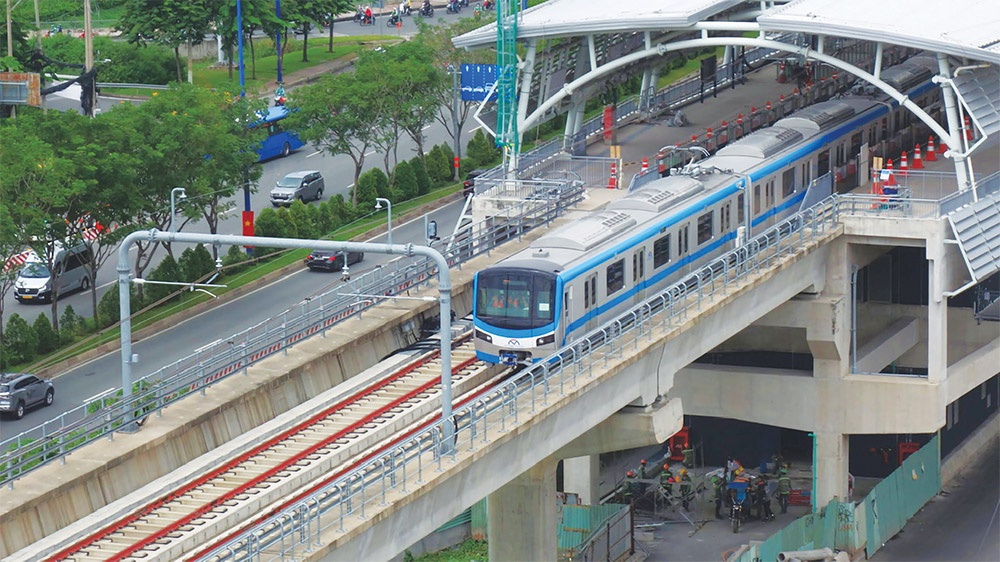 |
| Messy underground system requiring regulatory overhaul, photo Le Toan |
In addition to serving passengers of metro line 1, Ben Thanh underground station will also be a transfer point connecting metro line 2 from Ben Thanh to Tham Luong, line 3A from Ben Thanh to Tan Kien, and line 4 from Thanh Xuan to Hiep Phuoc Urban Area.
While Ben Thanh central station was the first ever underground space built by the city, plans to expand on this are still currently vague.
At the latest conference of Ho Chi Minh City Party Committee for this term, taking place in June, Hua Quoc Hung, director of Ho Chi Minh City Export Processing and Industrial Zones Management Authority, said that due to the unavailability of underground space planning, many proposals to build underground constructions are not moving ahead.
“This planning needs to be done as early as possible to have a development orientation, to avoid having to adjust or supplement later,” Hung said.
For example, Phu Tho Racetrack in District 11 wants to set up an underground space for parking and a commercial and service area. However, authorities cannot give permission because there is no concrete plan to connect this underground system with the neighbouring underground system of the future metro line 5.
The underground parking lot under Trong Dong theatre in District 1 has also been delayed for 10 years because it would overlap with plans for the underground station of metro line 2.
Nguyen Thi Bao Quynh, vice president of Indochina Group, the investor of the underground system under Trong Dong Theatre, said that she has continuously worked with departments and branches of Ho Chi Minh City and gone through many lengthy procedures over the years, but has not been able to resolve this problem.
“Investors must struggle with long and complicated procedures that constantly change and cost a lot. Due to the long project implementation period and changes in legal regulations, the steps of the project have to be redone completely without fault of the investor. Therefore, we urgently request the people’s committee to re-examine the entire process of implementing the project’s legal procedures and soon direct the resolution so we can finally start this project,” Quynh said.
According to Ho Chi Minh City People’s Committee, underground planning activities face many problems. Specifically, building underground construction data is difficult because the database is managed by many different industries. The current state of underground infrastructure was built over many periods, lacking archival documents, while the surveying and investigating activities are expensive.
Moreover, underground space planning is a new concept to Vietnam and there are currently no detailed instructions on implementation content, as well as a lack of guidance on planning methods.
City experts assessed that it is time for Ho Chi Minh City to have a master plan and preferential policies to attract domestic and foreign investors to invest in underground urban projects, especially after metro line 1 comes into operation.
As an architect who participated in planning several underground spaces in Montreal, architect Ngo Viet Nam Son said that the underground space in the Canadian city was successful thanks to the connectivity factor.
“City authorities need to connect the underground spaces of private constructions to other public underground spaces to make the whole system to be effective,” Son said. “In Ho Chi Minh City, the central area currently lacks public space, so the development of underground space is significant. Currently, in the city centre, we can plan underground space in public spaces such as stations on metro lines, high-rise buildings, and skyscrapers.”
Nguyen Thanh Nha, director of Ho Chi Minh City Department of Planning and Architecture said, “The general planning of Ho Chi Minh City towards 2040 notes that current underground space is mainly oriented towards three main functions: public transport with urban railway lines running underground, static traffic with urban railway stations and parking lots, and commercial streets integrated with underground railway stations.”
Accordingly, four key areas will be reserved to develop underground space in the city: Ho Chi Minh City centre, Thu Thiem centre, Cho Lon-Phu Tho centre, and Hoa Hung-Cong Hoa centre. Within that, there will be 12 commercial underground spaces, seven station underground spaces, and four specific underground spaces, Nha added.
In addition, three other areas would also be reserved for developing underground spaces, in the integrated tunnel expanding Phu My Bridge in district 7, the Truong Chinh-Au Co station area in Tan Binh district, and Gia Dinh Park Station in Go Vap district.
| Henry Chin, head, Asia-Pacific Research CBRE
With a city population of more than 10 million and the land bank in the central business districts becoming increasingly scarce, underground space deployment is essential to meet the development of this dynamic city. Key questions to evaluate the feasibility of this strategy including preparation stage of whether the general database and synchronisation of existing underground properties and infrastructures, such as electricity, telecom, water supply system are ready, so that authorities can create a master plan for the underground space. After having a basis for planning, technical issues will need to be considered next, including geological and hydrological issues. The fact that almost all existing buildings in Ho Chi Minh City have no connection to underground spaces will be a challenge in the process of finding suitable connection points for underground spaces in general. This also needs strong support from government policy, in which the legal basis related to the ownership and use of underground space and technical standards need to be researched as soon as possible. Similar to commercial real estate projects, solving financial problems is an essential issue so that projects can be implemented on time and avoid affecting social security. The above issues must be resolved in parallel to be able to see the overall solution, thereby giving an accurate answer to the feasibility of the underground plan of the city. Kien Hoang, director, ARUP Vietnam
Singapore and Hong Kong have recently applied a connection model between high-rise buildings and underground construction systems very successfully. In such large cities, this connection is effective. As for places that are not as developed like Vietnam, there needs to be specific and appropriate plans. This is related to transit oriented development, an urban development model that takes the orientation of public transport development as the basis for development planning. It takes traffic hubs as a population concentration point from which to form the transportation system. This is the concept that buildings and utilities are being developed in a synchronous manner with the urban transportation network. Therefore, instead of considering buildings as independent objects located in a certain value, they need to be considered as part of a transportation network. As well, all issues should be considered in relation to each other to create a suitable overview, thereby determining the functions of each project, determining the direction of development, and building a template to develop and use underground space systems under the management of planning agencies. After that, detailed instructions will be developed for all related entities such as high-rise buildings, public facilities, and public space areas all need specific instructions to ensure the smooth operation of the entire system. From there, plans can be adjusted later to the reality. |
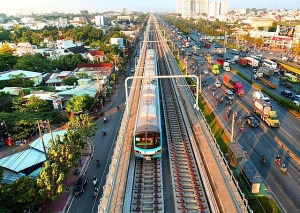 | Ho Chi Minh City needs nearly $35 billion for 10 metro lines The southern city wants to build 10 metro lines by 2060, over 510km in length, and with a total investment of nearly $34.5 billion. |
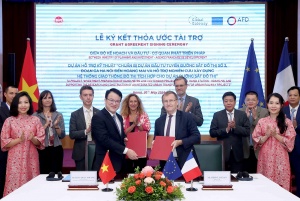 | France provides €10 million to build Hanoi Metro Line 3 extension The French government has pledged its support to help Vietnam accelerate metro projects, develop public transport, and cut carbon emissions. |
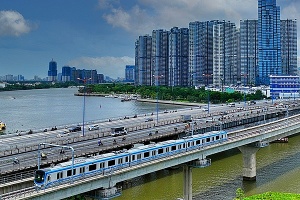 | Hitachi requests additional $157 million for Metro Line No.1 Japanese contractor Hitachi requested additional costs of up to VND4 trillion ($157.2 million) to be reimbursed for the time extended for Metro Line No.1 in Ho Chi Minh City,. |
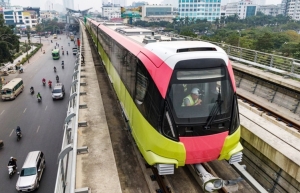 | Hanoi ready to open Nhon-Hanoi metro line The elevated section of the Nhon-Hanoi metro line is expected to officially open in July, following more than ten years of construction. |
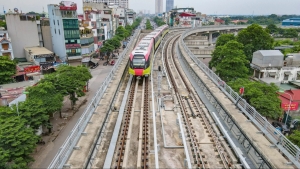 | Hanoi to develop comprehensive and modern urban metro lines Hanoi plans to invest over $55 billion to build a synchronised and modern urban railway network. |
What the stars mean:
★ Poor ★ ★ Promising ★★★ Good ★★★★ Very good ★★★★★ Exceptional
Related Contents
Latest News
More News
- Green finance offers 'passport' for Vietnamese construction, building materials firms (December 15, 2025 | 08:00)
- Gamuda Land commit long-term investment (December 12, 2025 | 11:49)
- HITC ties up with Evolution to develop AI and hyperscale data centres in Vietnam (December 11, 2025 | 12:09)
- Real estate deals boom via high-profile names (December 08, 2025 | 11:32)
- Industrial segment shaped by M&As (December 08, 2025 | 08:00)
- The Privé sets the benchmark for luxury real estate (December 05, 2025 | 08:28)
- TD CASA and the rise of bespoke interior design in luxury living spaces (December 03, 2025 | 14:14)
- Lee Soo-man's Blooming Sky to build Gia Lai culture, sport, and entertainment complex (December 02, 2025 | 16:41)
- Sustainability in DNA of Keppel Vietnam's future urban development strategy (November 28, 2025 | 10:53)
- South Korean investors seek clarity on IP lease extensions (November 24, 2025 | 17:48)



 Tag:
Tag:





















 Mobile Version
Mobile Version